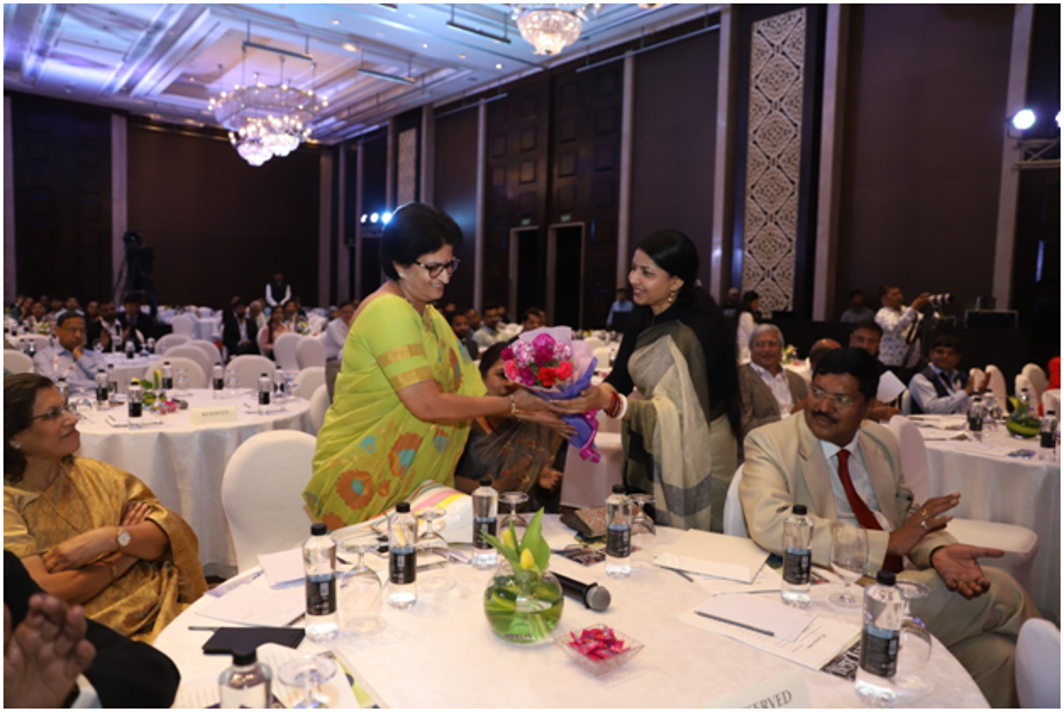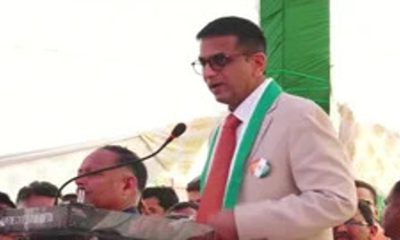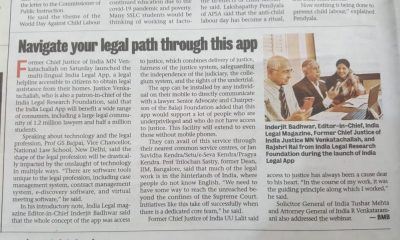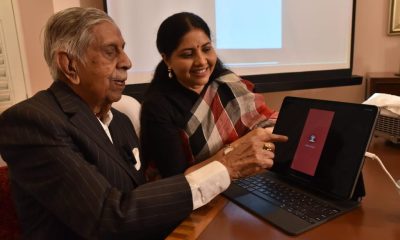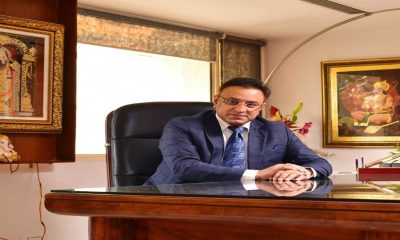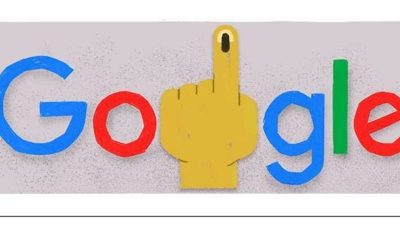India News
India Legal’s first of its kind legal leadership conclave, Insolvency & Bankruptcy Code as theme
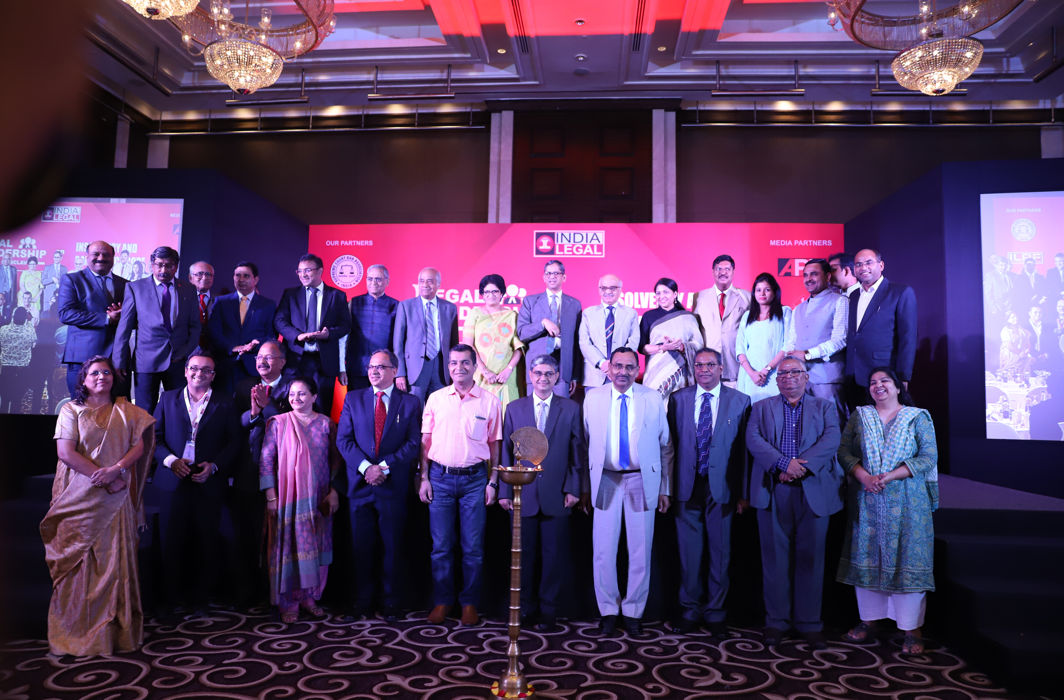
The first of its kind Legal Leadership Conclave held by India Legal at St. Regis Hotel, Mumbai on Saturday, April 27 was focused on the theme of Insolvency and Bankruptcy Code.
Held in partnership with Supreme Court Bar Association (SCBA), India Legal Research Foundation (ILRF), APN, and Nepal 1 and presented by ENC, the idea behind legal leadership conclave is to create awareness about legal issues and educating young lawyers on contemporary legal issues. The Conclave is a platform to bring together the best legal minds of the country.
The conclave at Mumbai is part of the series of conclaves that would take place in different parts of the country to being together the best minds.
Read: A Dramatic, Powerful Initiative By Inderjit Badhwar
The Mumbai conclave decoded the Insolvency and Bankruptcy Code, an ambitious piece of economic reform in India’s history which came into being in May 2016. However, its implementation is riddled with many issues that had not been thought of at the time of drafting the resolution. This conclave was an opportunity for various stakeholders to deliberate on the prospects of IBC.
The crowd at the conclave included top builders of Mumbai, lawyers, technocrats, students from Maharashtra Law University.
The conclave started with Ganesh Vandana and the lighting of the ceremonial lamp followed by presentation of bouquet to the distinguished panel by executive members of SCBA.
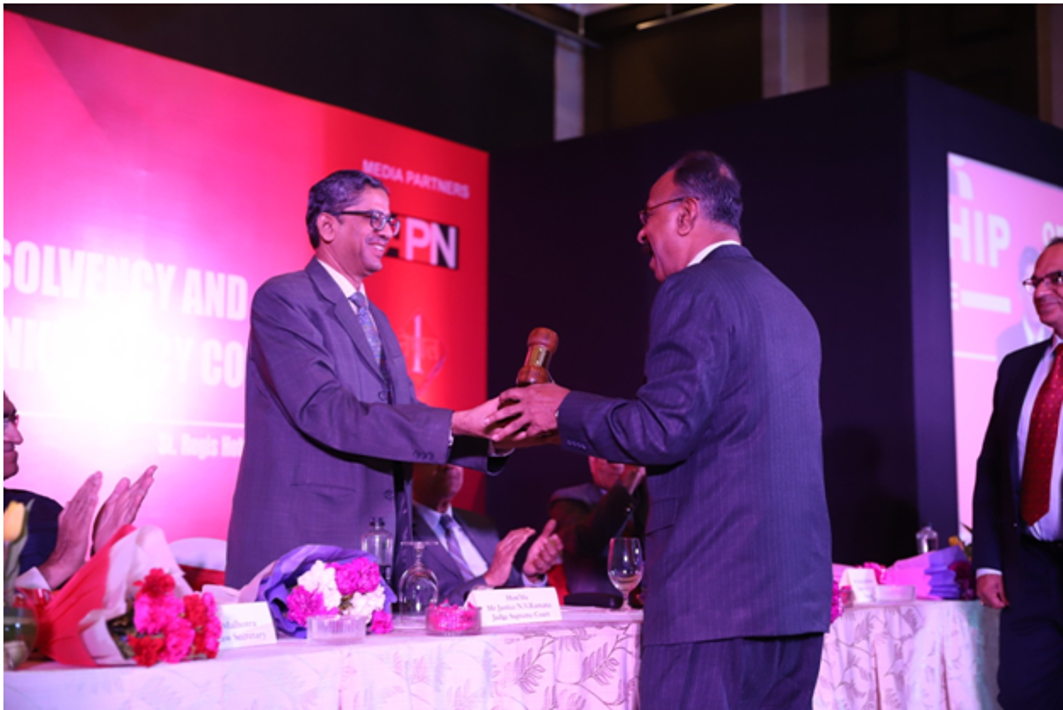 Former Law Secretary to Government of India PK Malhotra delivered the welcome address with Justice NV Ramona, judge Supreme Court, Justice BN Srikrishna, former judge Supreme Court, Inderjit Badhwar, editor-in-Chief India Legal, and Justice Pradeep Nandrajog, chief justice of Bombay High Court on the dais.
Former Law Secretary to Government of India PK Malhotra delivered the welcome address with Justice NV Ramona, judge Supreme Court, Justice BN Srikrishna, former judge Supreme Court, Inderjit Badhwar, editor-in-Chief India Legal, and Justice Pradeep Nandrajog, chief justice of Bombay High Court on the dais.
“There can’t be a better person than Justice Ramana to be the chief guest at this conclave dealing with Insolvency and Bankruptcy code. He has chaired several committees related to this law. We look forward to hearing words of wisdom and guidance from him. He has made useful recommendations in the area of institutional arbitration,” observed PK Malhotra.
Appreciating the theme of the conclave, Malhotra said: “IBC is a commendable initiative. It has helped India leapfrog ahead in the list of countries known for the ease of doing business. In fact IBC has changed the whole thought process in the insolvency sector. The entire thrust of IBC is in the revival of sick businesses. Such is the impact of IBC today that there is hardly a day where developments related to IBC do not get reported in the press, either local or national.”
“The object of this Conclave is to bring all stakeholders together and offer them a platform to discuss challenges and opportunities of IBC.”
“I congratulate India Legal, the ENC group, honourable judges, members of law students and industry experts for making this event a success,” said Malhotra.
Justice BN Srikrishna said: “IBC is considered a landmark reform in the area of ease of doing business. It helps in the resolution of insolvency issues and helps refloat a company which is in financial distress. IBC has reduced the time taken to wind up a company.
“It has gone a long way in improving India’s ranking in the ease of doing business. There has always been a great demand for an insolvency law in India and IBC fits the bill. IBC is an idea whose time has come. It will accelerate India’s economy, promote entrepreneurship. It is a game changer. People are gung ho about IBC. However, there are certain shortcomings in IBC: it has explicit bias against liquidation within the govt and the law. However, that is not what the law says. Secondly the law is agnostic, it only prescribes a process. And this bias manifests itself in judicial intervention. Third and not the least, the extended timeline creates chances of abuse.”
“The poor infrastructure and inadequate bench strength of NCLT tribunals is also an issue. Then tribunals must be kept outside the ambit of the government. These need independence.”
Justice NV Ramana giving a detailed evaluation of the IBC law in his speech, said “IBC is an important piece of legislation. The location of this conclave is apt as Mumbai is a business hub and has many economists, bankers.”
Read: Top legal luminaries deliberate on Insolvency & Bankruptcy Code at India Legal Conclave
Inderjit Badhwar said: “I am impressed by the views of Mr Malhotra. He has given us confidence and inspired us to go ahead with the conclave. Justice Srikrishna’s observation of IBC bringing in “Achche Din” was very interesting. I am grateful to Justice Ramana for making an uninteresting subject into an interesting one.”
The Technical Session started after tea break, the first being on Opportunities and challenges for IBC.
The speakers at the session were Mukulita Vijayawargiya, member (IBBI); VP Singh (NCLT member); Mohan Bhaskar Pantulu (NCLT member); TK Vishwanathan, former secretary general, Lok Sabha; and Somasekhar Sundaresan, advocate. Justice BR Gavai of the Bombay High Court will chair the panel
Speaking on the theme, VP Singh said: “Resolution of financial distress is an important part of the economy. There a need was felt for an insolvency resolution. Today many countries have insolvency resolution laws. IBC has created awareness about healthier lending. The success rate of cases related to IBC is quite high: around 40 per cent.”
He was followed by Mohan Bhaskar Pantulu (NCLT member) who said the NCLT “has good muscles but no teeth.” He said: “We should be given sufficient members. There should be security of tenure of NCLT members. The difficulties of the NCLT system must be projected to the govt. We should have the powers to penalise the culprits. Today the cases go in courts and it takes years.”
TK Viswanathan, who was part of the drafting of the IBC law and played an important role in framing the law, said: “The exercise in bringing a law on insolvency was not at all easy. There was a turf war from different ministries. We drafted the bill in Nov 2015 which was later passed by the parliament. Today the law has stood the test of time. It is a jewel in the statute books.”
“There is a dire need for insolvency and bankruptcy professionals. Then there are budgetary constraints, issues of infrastructure. I feel that IBC should not be justiciable. It is actually a creditors’ call.”
“However,” he said, “IBC has been working well. The Supreme Court has also endorsed it.”
“Today, sadly it is more or less dictated by NPAs and banks. Actually it concerns the credit market.”
“IBC is going through problem areas which are rather transient. Insolvency is a new area the law will attract the new generation with more and more professionals coming in.”
Mukulita Vijayawargiya, member (IBBI) noted: “IBC is a product of previous legislations and an end product of various committee resolutions in the sector. We need a different kind of procedural law to address IBC.”
“IBC is actually based on 3 Cs: Consolidation, Coordination and Compliance. This 3C formula has made the IBC successful. IBC is more a remedial law which focuses on resolution of insolvency issues.”
“Insolvency as an issue is nothing new. One can trace debt insolvency way back to Mahabharata when it was considered a stigma to be a debtor. That mindset continues even today.”
“The record of IBC is great and noteworthy. There are more than 2,000 professionals involved in the sector. As on March 31, around 18,000 cases were admitted. Around 1400 cases are ongoing, resolution has been done in around 90 cases, and in around 90 cases, the applications have been withdrawn. The IBC offers enough and sound flexibility mechanism to exit.”
Somasekhar Sundaresan observed: “Section 29A has led to stigmatisation in IBC. There should be prompt corrective resolution outside the IBC. The law should help us to take decisions.”
Justice BR Gavai of the Bombay High Court, who chaired the panel, said: “IBC has the potential to bring solace to creditors. It has considerably improved the way we do business in India and India today is admired the world over for the ease of doing business. The Leadership Conclave will go a long way in improving the way IBC functions.”
Resuming after a lunch break, the second part of technical session was on “Impact of IBC on business establishments and the real estate sector”.
The speakers at this session were: Ravi Kumar Duraisamy (member NCLT); Justice J Bharati Dangre of the Bombay High Court; Justice V. Nallasenapathy (member NCLT); Soli Cooper, advocate; OP Bhatt, director ONGC and chairman; Jana Kalyan Das, senior advocate; and former SCBA president PH Parekh. Justice Dangre is the chairperson of the session
Justice J Bharati Dangre of the Bombay High Court who chaired this session said: “Three years have passed since IBC was introduced in India. The scenario looks happy and the law has yielded results. However, some creases still need to be ironed out. It is good to see national law universities’ students at this gathering. After all they are the future judges of India. Real estate being the subject of this session is important. Many developments have taken place in this sector with the advent of RERA and the sector has gone through many ups and downs. It was in 2018 that the IBC brought in the homebuyer as a ‘financial creditor’ which is praiseworthy.’
OP Bhatt said: “There is nothing wrong is a business failing. Rather businesses should be allowed to fail fast and rise up once again. This is where the IBC comes in. IBC unifies laws and codes. Resolution is now faster, better. Things are moving fast and in the right direction. With IBC there is a realisation among businesses to stem things going wrong before they go out of hand.”
“However, there are issues. But now everybody is trying to make the system a little better. The law is good for the economy, business and banks. The future looks promising.”
Justice V Nallasenapathy (member NCLT) said: “One must remember that 80 to 90 per cent of individual insolvency cases are genuine. It is unfair to taint every business. Setting up a company is not that easy.”
“IBC is one of the celebrated laws in India. But there are issues like delay in settling cases, haircuts are tight, the wisdom of COC is debatable, the debate of Section 29A vs Section 12A.”
Jana Kalyan Das, senior advocate said: “IBC has shattered the myth that the Third world countries can’t enact any meaningful laws. IBC tries to not only cure the industry from sickness but also save it.”
“However, IBC is absolutely divested of stringent provisions unlike FEMA, PLMA and even GST. It is time certain offences must be made cognisable.”
“There is no special courts specified under IBA to deal with certain cases.”
Ravi Kumar Duraisamy (member NCLT) said: “It is to be seen whether the banks can accept any bidding value which is lesser than the market value of a distressed business. Opn auction as a possibility should be considered.”
PH Parekh said: “In our times a bankrupt business person/family was always considered rich. Because they escaped scrutiny by merely declaring themselves as bankrupt. It was very difficult to catch them ultimately.”
“The Judiciary must ensure that justice is done early in IBC cases.”
This session ended with a tea break and was followed by the Valedictory Session that was attended by Justice Nandrajog, Justice Ramana and senior advocate Janak Dwarka Das.
Janak Dwarka Das, senior advocate, said: “IBC has brought back money into the banking system. It is a game changer. Its principal objective is to revive and maximise the value of creditors. It is a creditor-driven legislation that puts a company back on its feet. The minute a petition is accepted under IBC, the management goes out and a resolution professional comes in. Creditors then decide the fate of a company either for revival or liquidation.”
“The current set of members of law tribunal are giving a different spin to the IBC which is good. The stress is on revival of a business unit. The intent is based on the premise that a business should survive, an asset is not lost and jobs are saved. I wish to thank NCLT for thinking along these lines.”
The most abiding debate as of now in IBC is Section 29A vs Section 12A.”
Justice Pradeep Nandrajog, Bombay High Court said: “IBC bypasses the high courts of the country. It was created to deal with insolvency and bankruptcy. However, there are issues: low visibility of plan sanctions by NCLT, timeframe for approvals is critical, clawing back assets in the absence of cross border insolvency is important, role of insolvency professions is an area that needs attention, it is generally seen that they lack the ability to comprehend hard core business issues, as they lack hands-on business experience, what they need is managerial experience, the 180-day waiting period is a double edged sword. It is seen that resolution process can extend beyond a year as seen in several western countries Issues which ultimately make a company bankrupt should be sorted out when they germinate.”
Justice Ramana concluded the event, saying: “The conclave was successful, it was educating and benefitted all of us. I thank everyone for making this Conclave successful and meaningful.”
The Vote of Thanks was delivered by Badhwar.
2024 Lok Sabha Elections
Kamal Haasan, Rajinikanth, Vijay Sethupathi, Dhanush vote in Chennai
Superstar Rajinikanth was accompanied by his publicist and his team at the polling both. He greeted everyone and flashed his inked finger for the media.
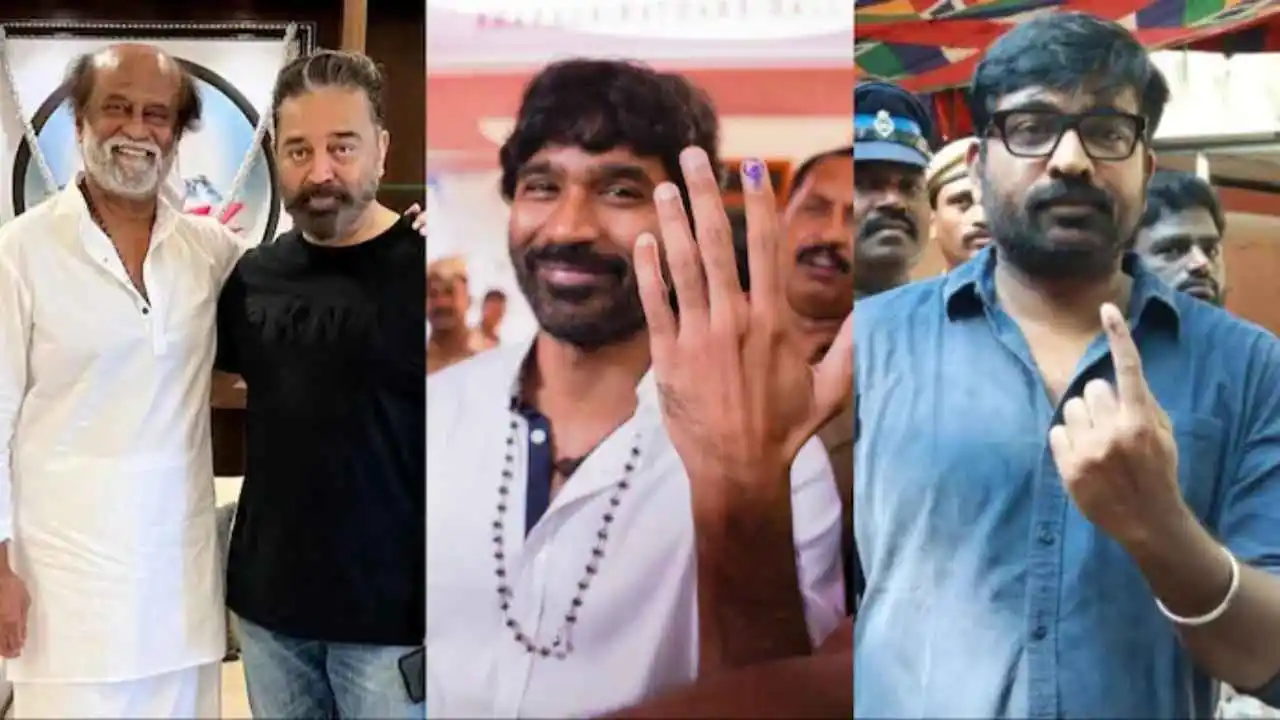
Superstar Rajinikanth and Kamal Haasan cast their votes at their respective polling booths in Chennai on Friday. Actor Dhanush cast his vote at the St Francis Xavier School, TTK Road. Vijay Sethupathi exercised his duty at the Chennai High School in Kilpauk.
Voting for the Lok Sabha Elections 2024 started on Friday. The people of Tamil Nadu will go for voting in the first phase of the elections today. Rajinikanth was accompanied by his publicist and his team at the polling both. He greeted everyone and flashed his inked finger for the media.
A video shows superstar Rajinikanth arriving at his booth and exercising his duty is circulating on social media. He was mobbed by fans while exiting the polling booth. Actor Kamal Haasan, and Makkal Needhi Maiam president, arrived at his election booth to cast his vote. Actor Dhanush cast his vote at the St Francis Xavier School in TTK Road at around 8 am. Vijay Sethupathi cast his vote at the Chennai High School in Kilpauk.
According to reports Ajith Kumar was one of the first actors to cast his vote in Chennai. Social media user Ramesh Bala took to X and shared a video of the actor at the polling station. The actor was seen voting in Thiruvanmiyur early on Friday. Ajith, Rajinikanth and Sivakarthikeyan spoke to the press after voting and urged people to come out and exercise their duty.
Superstar Rajinikanth will be seen next in director TJ Gnanavel’s Vettaiyan. The film features an ensemble cast including Rana Daggubati, Fahadh Faasil, Amitabh Bachchan, Manju Warrier, and Dushara Vijayan, Ritika Singh in pivotal roles. Upcoming projects of Dhanush include Raayan, Kubera and Nilavukku En Mel Ennadi Kobam. Ajith was last seen in the 2023 film Thunivu. He is currently shooting for Vidaa Muyarchi, which is helmed by Magizh Thirumeni and also stars Trisha, Arjun Sarja, Regina Cassandra and Arav in important roles.
2024 Lok Sabha Elections
Lok Sabha elections 2024: Google Doodle marks the start of polls with index finger voting symbol
Google released a doodle today, to mark the begining of Lok Sabha Elections 2024 in India.
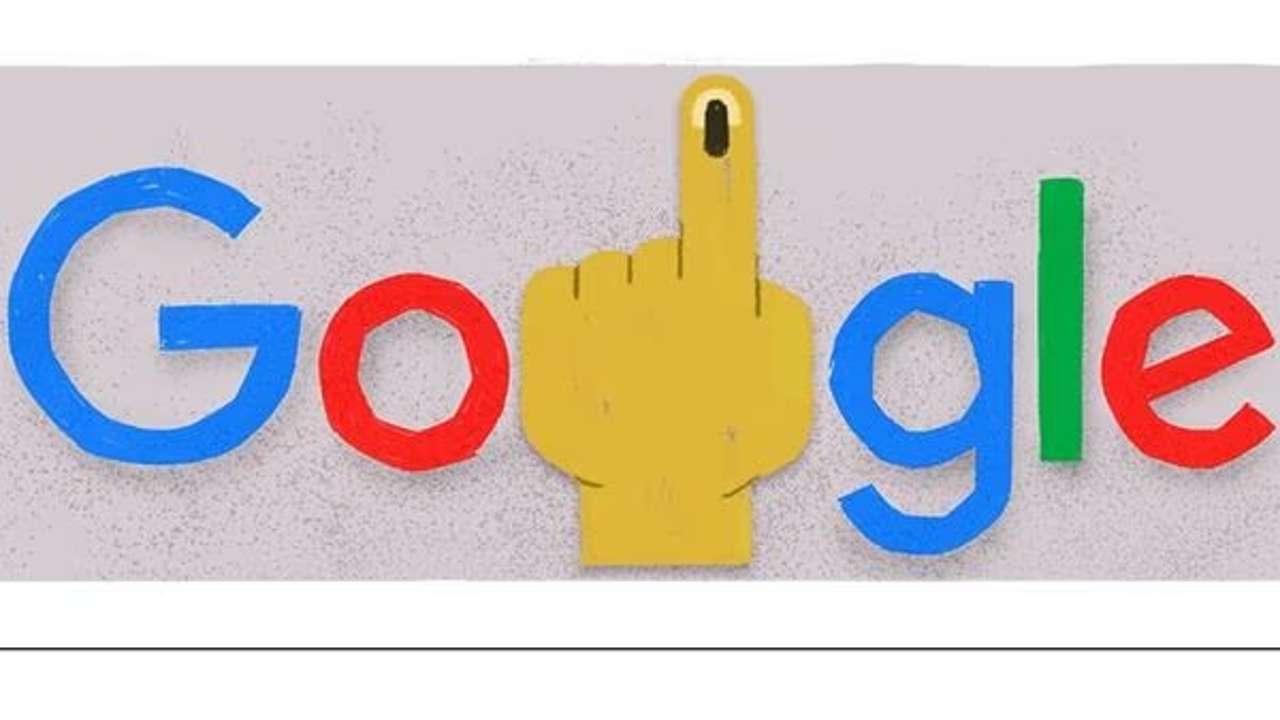
Google unveiled a doodle today, with an inked index finger to commemorate the start of the voting for Indian Lok Sabha elections 2024. This symbolic image represents the country’s ongoing voting process as the general election’s first phase gets under way.
The nationwide availability of this doodle will encourage voters in different states to visit polling booths to cast their votes.
Google Doodles are quick, temporary updates to the Google logo that reflect various national and international topics, such as holidays, significant occasions, and influential people who have had a significant impact on society.
Users can engage in a range of engaging experiences with these Doodles because they are presented in a variety of formats, including photos, animations, slideshows, videos, and interactive games.
Meanwhile, the BJP-led NDA and the INDIA alliance are expected to engage in a fierce contest in this year. 102 constituencies are being covered by elections being held in 17 states and 4 Union Territories (UTs) during 1st phase of election. Over 16.63 crore eligible voters will have 1.87 lakh polling places set up for the first phase of voting. There are 8.4 crore men, 8.23 crore women, and 11,371 voters of a third gender among the eligible voters.
A total of 1625 candidates from various parties will contest in the first phase of elections. Nitin Gadkari, K Annamalai, Jitin Prasada, Jitan Ram Manjhi, Nakul Nath, Gaurav Gogoi, Imran Masood, Karti Chidambaram, Tamilisai Soundararajan, and Dayanidhi Maran are among the important candidates whose fates would be decided today.
The Election Commission of India (ECI) has announced that polling will take place from 7:00 am to 6:00 pm. The results of the voting will pe announced on June 4, as per ECI.
Today, April 19, a number of states, including the Andaman and Nicobar Islands, Sikkim, Tamil Nadu, Puducherry, Uttarakhand, Meghalaya, Mizoram, Nagaland, and portions of Maharashtra, Madhya Pradesh, Uttar Pradesh, Jammu and Kashmir, Tripura, Rajasthan, Chhattisgarh, Manipur, Assam, and Bihar, will hold their first phase of elections.
Voting in Phase 2 is slated to take place on April 26. Phase 3 will take place on May 7, Phase 4 on May 13, Phase 5 on May 20, Phase 6 on May 25, and Phase 7 on June 1.
2024 Lok Sabha Elections
Prime Minister Narendra Modi urges citizens to vote in record numbers as voting for first phase of Lok Sabha elections begins on 102 seats across India
Union Home Minister Amit Shah also urged citizens to vote in large numbers and added that it is not only meant to determine the fate of a Lok Sabha or a candidate but also for shaping a bright future for the country.
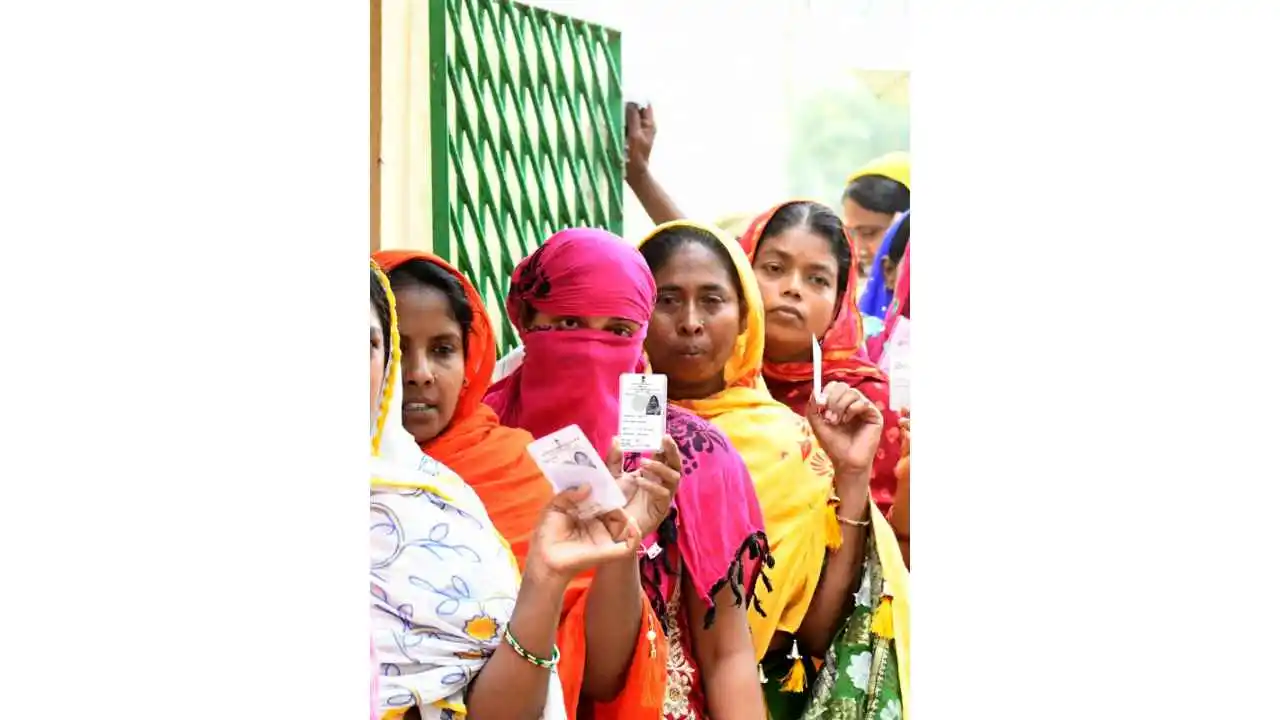
Voting for the first phase of Lok Sabha elections is taking place on 102 seats spread all over India. Prime Minister Narendra Modi took to X and urged citizens to vote in record numbers. He said he particularly called upon the young and first time voters to vote in large numbers. He added that every vote counts and every voice matters.
Congress leader P Chidambaram and RSS supremo Mohan Bhagwat cast their votes in Chennai and Nagpur, respectively. Chidambaram was confident that INDIA bloc will sweep all 39 seats in Tamil Nadu. Union Home Minister Amit Shah also urged citizens to vote in large numbers and added that it is not only meant to determine the fate of a Lok Sabha or a candidate but also for shaping a bright future for the country.
He appealed to all the voters who are voting in this phase to vote in large numbers because every vote of theirs has the power to create a secure, developed, and self-reliant India. He appealed to the people to choose a strong and decisive leadership that has shown the determination to free the country from corruption, nepotism, and appeasement while fulfilling its promises.
In the first phase, elections are being held on all seats in Uttarakhand (5), Tamil Nadu (39), Meghalaya (2), Arunachal Pradesh (2), Mizoram (1), Puducherry (1), Nagaland (1), Andaman and Nicobar Islands (1) and Lakshadweep (1), Sikkim (1). Besides, there is voting in 8 seats in Uttar Pradesh, and Maharashtra, 6 seats in Madhya Pradesh, 12 seats in Rajasthan, 4 in Bihar, 2 in Manipur, 3 in West Bengal, and 1 seat each in Jammu and Kashmir, Tripura, and Chhattisgarh. Assembly elections are also taking place on 60 seats in Arunachal Pradesh and 32 seats in Sikkim.
-

 Entertainment21 hours ago
Entertainment21 hours agoBollywood stars Vidya Balan, Kartik Aaryan, Pratik Gandhi, Ileana D’Cruz, Mouni Roy, Radhika Madan, Mrunal Thakur attend Do Aur Do Pyaar premiere
-

 Cricket news19 hours ago
Cricket news19 hours agoHappy Birthday KL Rahul: Suniel Shetty wishes son-in-law KL Rahul on his 32nd birthday
-
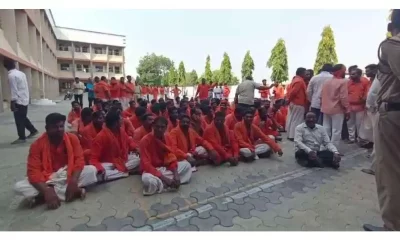
 India News23 hours ago
India News23 hours agoReligious outfit vandalises The Blessed Mother Teresa High School in Telangana after teachers object to students wearing Hanuman Deeksha dress
-
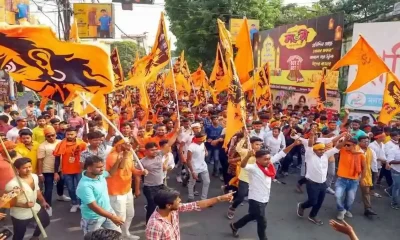
 India News24 hours ago
India News24 hours agoClashes erupt during Ram Navami procession in West Bengal’s Murshidabad district
-
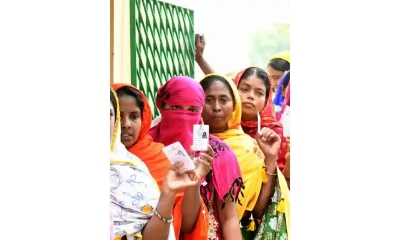
 2024 Lok Sabha Elections2 hours ago
2024 Lok Sabha Elections2 hours agoPrime Minister Narendra Modi urges citizens to vote in record numbers as voting for first phase of Lok Sabha elections begins on 102 seats across India
-

 India News18 hours ago
India News18 hours agoEnforcement Directorate seizes Shilpa Shetty’s husband Raj Kundra’s properties worth Rs 97 crore
-
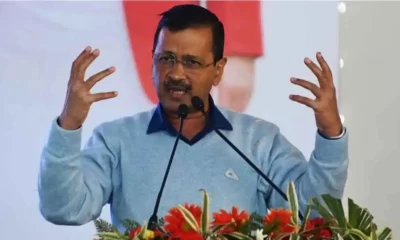
 India News17 hours ago
India News17 hours agoEnforcement Directorate says Arvind Kejriwal is deliberately eating mangoes, sweets, taking sugar with tea to increase his blood sugar level and create ground for bail
-
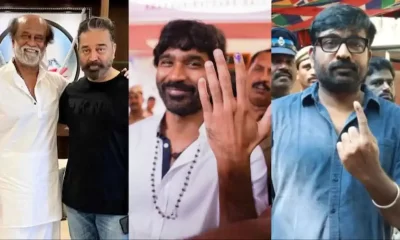
 2024 Lok Sabha Elections43 mins ago
2024 Lok Sabha Elections43 mins agoKamal Haasan, Rajinikanth, Vijay Sethupathi, Dhanush vote in Chennai

